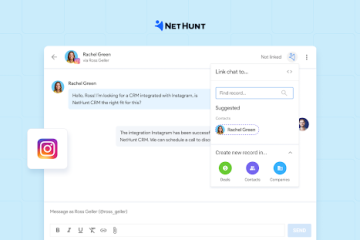Customer Data Platforms (CDPs) have revolutionized the marketing landscape by providing a unified view of customer data. This comprehensive insight enables businesses to craft more effective marketing strategies, personalize customer interactions, and optimize overall campaign performance.
This article will explore how a CDP solution can significantly enhance marketing strategies, offering tangible benefits for businesses aiming to stay competitive in today’s data-driven world.
1. Unified Customer Data
Breaking Down Silos
One of the primary advantages of a cdp solution is its ability to break down data silos within an organization. Customer data often resides in disparate systems such as CRM, email marketing platforms, e-commerce databases, and social media channels. A CDP consolidates this data into a single, unified view, making it accessible and actionable for marketing teams.
Comprehensive Customer Profiles
Comprehensive customer profiles are produced by a CDP through the consolidation of data from several sources. These profiles include demographic information, purchase history, behavioral data, and interactions across various channels. With a holistic view of each customer, marketers can tailor their strategies to meet individual needs and preferences.
2. Enhanced Personalization
Segmentation and Targeting
A CDP enables advanced segmentation capabilities, allowing marketers to create highly targeted audience segments. By analyzing customer data, marketers can identify specific groups based on attributes such as age, location, purchase behavior, and engagement levels. This segmentation facilitates more precise targeting and ensures that marketing messages resonate with the intended audience.
Personalized Campaigns
With detailed customer insights, marketers can design personalized campaigns that speak directly to individual preferences and behaviors. For example, personalized email campaigns can be tailored to reflect recent purchases, browsing history, or abandoned carts. Personalized content not only enhances customer experience but also increases engagement and conversion rates.
3. Improved Customer Journey Mapping
Understanding Customer Touchpoints
A CDP provides visibility into the entire customer journey by tracking interactions across various touchpoints. This includes website visits, social media engagements, email opens, and offline interactions. Understanding how customers navigate through different stages of their journey helps marketers identify key touchpoints and optimize their strategies accordingly.
Optimizing Customer Experiences
By analyzing customer journey data, marketers can identify pain points and areas for improvement. For instance, if a significant drop-off is observed at a particular stage, marketers can investigate the cause and implement strategies to enhance the experience. This could involve optimizing website navigation, improving content relevance, or refining call-to-action prompts.
4. Real-Time Data Activation
Timely Engagement
In today’s fast-paced digital landscape, timely engagement is crucial. A CDP enables real-time data activation, allowing marketers to respond to customer actions and behaviors as they occur. For example, if a customer abandons their shopping cart, a CDP can trigger an automated email with a personalized discount offer to encourage completion of the purchase.
Dynamic Content Delivery
Real-time data activation also facilitates dynamic content delivery. Marketers can use real-time data to customize website content, product recommendations, and advertisements based on current customer behavior. This dynamic approach ensures that customers receive relevant and timely messages, enhancing their overall experience.
5. Data-Driven Decision Making
Advanced Analytics and Reporting
A CDP solution provides advanced analytics and reporting capabilities, enabling marketers to gain deep insights into campaign performance. Marketers can track key metrics such as engagement rates, conversion rates, customer lifetime value, and return on investment (ROI). These insights enable marketers to optimize their strategy for better outcomes and make data-driven decisions.
Predictive Analytics
Many CDP solutions incorporate predictive analytics, leveraging machine learning algorithms to forecast future customer behaviors and trends. Predictive analytics can help marketers identify potential churn risks, predict customer lifetime value, and anticipate purchasing patterns. By understanding these trends, marketers can proactively tailor their strategies to maximize customer retention and revenue.
6. Increased Marketing Efficiency
Automation and Workflow Optimization
A CDP streamlines marketing processes by automating various tasks and workflows. Automated data integration, segmentation, and campaign execution reduce the manual effort required by marketing teams. This increased efficiency allows marketers to focus on strategic initiatives and creative aspects of their campaigns.
Cost Savings
By optimizing marketing processes and improving targeting accuracy, a CDP can lead to significant cost savings. Reduced wastage of marketing resources, lower customer acquisition costs, and improved campaign performance contribute to a higher return on marketing investment (ROMI). This financial efficiency is particularly valuable in competitive markets.
7. Enhanced Customer Retention
Personalized Retention Strategies
It is frequently less expensive to keep current clients than to find new ones. A CDP enables marketers to develop personalized retention strategies based on customer behavior and preferences. For example, loyalty programs, personalized offers, and targeted re-engagement campaigns can be tailored to encourage repeat purchases and foster customer loyalty.
Improved Customer Satisfaction
By delivering personalized and relevant experiences, a CDP enhances overall customer satisfaction. Satisfied customers are more likely to remain loyal to a brand, provide positive referrals, and contribute to long-term business growth. High customer satisfaction also reduces churn rates, further supporting retention efforts.
8. Compliance and Data Security
Data Privacy Regulations
With increasing concerns around data privacy, compliance with regulations such as GDPR and CCPA is essential. A CDP solution helps ensure compliance by centralizing data management and providing tools to manage consent and data usage preferences. Marketers can maintain transparency and build trust with customers by respecting their data privacy.
Secure Data Handling
CDP solutions prioritize data security, implementing robust measures to protect customer information. Encryption, access controls, and regular security audits ensure that data is handled securely. This commitment to data security safeguards both the organization and its customers, fostering a trustworthy relationship.
Invest in a Customer Data Platform (CDP) Solution
A Customer Data Platform (CDP) solution offers a multitude of benefits that can significantly improve marketing strategies. By providing a unified view of customer data, enabling enhanced personalization, optimizing customer journeys, and facilitating real-time engagement, a CDP empowers marketers to deliver more effective and efficient campaigns.
The ability to make data-driven decisions, coupled with advanced analytics and predictive capabilities, further enhances marketing performance. Additionally, increased marketing efficiency, enhanced customer retention, and compliance with data privacy regulations underscore the value of investing in a CDP solution.



